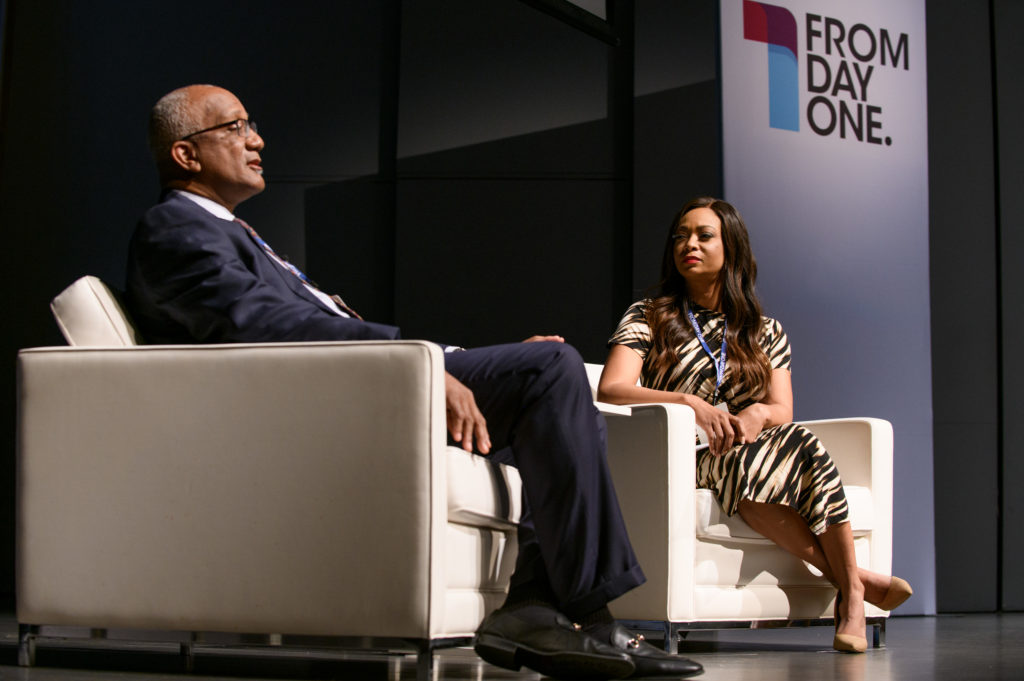In Chicago, One City's Response to the Racial Reckoning


The murder of George Floyd in 2020 sparked a nationwide reckoning over racial justice–and that conversation reached a fever pitch in Chicago. The city is among America’s most segregated, made so in part by decades-old policies that shoehorned Black residents into specific corners of the city. While those policies are no longer in effect, they have left an enduring legacy. Chicago’s South Side, especially, remains overwhelmingly Black, and many of the neighborhoods there continue to contend with the effects of poverty and a lack of community investment.
The city’s leaders already had begun attempting to remedy those circumstances well before Floyd’s killing. Indeed, Chicago Mayor Lori Lightfoot announced her signature INVEST South/West initiative in the fall of 2019, shortly after her election, pledging to direct $750 million in investments into those communities.
“Government got us into this. Now government has a an obligation to get us out of it,” said Marquis Miller, the city of Chicago’s chief diversity officer, in a fireside chat with Michelle Relerford, a news anchor at Chicago’s NBC 5 News, at From Day One’s March conference in Chicago. Miller highlighted several ways Chicago is attempting to fulfill that obligation, in addition to Lightfoot’s INVEST South/West program.
One is improved transparency in hiring. The website of the city’s Office of Equity and Racial Justice includes an Equity Dashboard that shows the composition of the city’s workforce by ethnicity as well as age and gender. The dashboard also compares the city’s workforce to Chicago’s population at large, and breaks down current-year hiring totals, as well as hiring by department. The dashboard shows off some substantial gains: Black Chicagoans make up 29.2% of the city-government workforce, for example, just behind their 29.8% share of the city’s population, and they accounted for 32% of new hires in 2021.
“You can actually compare the progress that we’ve made and will continue to make, because this is not work that is easy to do overnight,” Miller said. “It is important work that we've done, and using data has allowed us to tell a different story within the city, as well as external to the city.”

Relerford pressed Miller on whether the city is doing enough to recruit candidates from communities where there is an entrenched skepticism toward city government. “What can be done when when people feel like they’re seeing these patterns year after year? And there’s talk about change, but people still feel like they’re being left out intentionally?” asked Relerford.
Miller defended the city’s recruitment and applicant-testing practices, and said that while Chicago has struggled to attract applicants to public-safety positions amidst calls for police reform—he described “monumental challenges at recruiting”—he believes real progress is underway.
“We’ve seen significant change, especially change along the lines of how we go out into the market to recruit individuals to serve in the Chicago Police Department and the Chicago Fire Department,” he said. “I don't want to say it’s been a sea change, but it has been a change that has been long overdue.”
Miller said the city is drawing on successful elements from its pandemic playbook to influence its approach to concerns around citizen distrust of city police. During the pandemic, for example, Chicago convened a series of community roundtables aimed at garnering input regarding how the city could address Covid’s disparate impact on Black and Hispanic communities. Last August, Mayor Lightfoot announced the creation of a Community Safety Coordination Center that is “designed to address violence and public safety in the same way we addressed the pandemic,” Miller said.
Miller also highlighted Chicago’s participation in the Government Alliance on Race & Equity (GARE). He said the city has adopted several of GARE’s equity guidelines and best practices within city-government offices, and that each city department now has a formal equity liaison. Miller described the effort as “normalizing the conversation around race,” and said the city also is piloting employee resource groups (ERGs) that convene gatherings of city employees with similar backgrounds and identities. The program is currently in a pilot phase with groups for veterans and people with disabilities, “and we expect that at the end of our pilot, we will open city government to other identities, because we want people to feel a sense of belonging, we want them to feel like it’s their government,” said Miller.
Miller acknowledged that there remains ample room for improvement, but said he believes Chicago’s equity efforts are on the right track. “We’re asking people for advice, we’re engaging them, and we’ve become far more transparent,” Miller said. “Sometimes people don't believe that government is actually being that open and transparent, but our administration’s bywords are to be equitable, to be transparent, to be accountable and to be inclusive.”
Steve Hendershot is an award-winning multimedia journalist and bestselling author. He hosts the Project Management Institute’s top-rated Projectified podcast and operates Cedar Cathedral Narrative Studio in Chicago.
The From Day One Newsletter is a monthly roundup of articles, features, and editorials on innovative ways for companies to forge stronger relationships with their employees, customers, and communities.